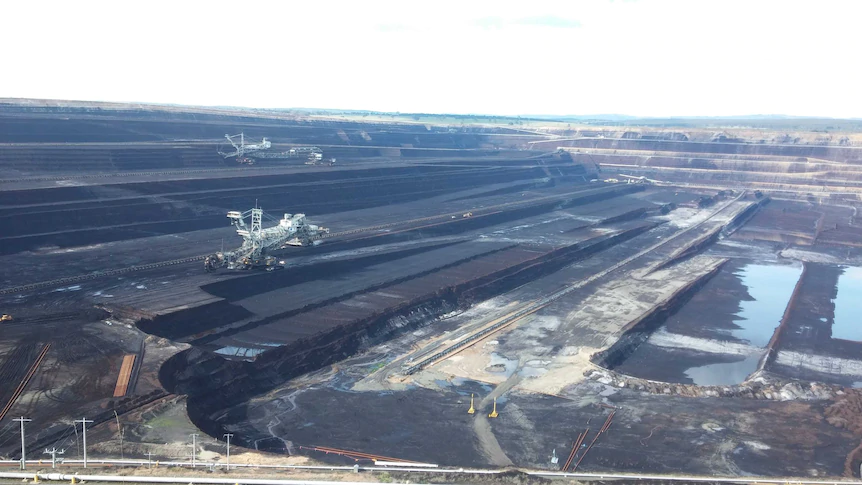
HESC: Start of hydrogen production from lignite in Victoria: CarbonNet Project
[Melbourne, March 12, Reuters]
KHI / Australia-Japan Venture:
Producing hydrogen from lignite in Victoria, Australia,
Aiming to transport to Japan,
Demonstration experiment project of A $ 500 million (US $ 387 million).
On March 12, it announced that “Australia-Japan venture companies have started producing hydrogen.”
Started hydrogen production:
Kawasaki Heavy Industries of Japan is proceeding with financial support from the Japanese and Australian governments.
Victoria accounts for a quarter of the world’s proved lignite reserves.
This project:
The produced hydrogen is
Taken to the port base,
Liquefied for export.
After that, it will be loaded on the world’s first liquefied hydrogen carrier manufactured by Kawasaki Heavy Industries.
Hydrogen Engineering Australia:
“In mid-2021, if the transportation of liquefied hydrogen begins, the world’s eyes will be on Victoria,” he said.
Australian partner of the project:
Electric Power Development (J Power),
Iwatani Corporation,
Marubeni,
Sumitomo Corporation,
Australian AGL Energy,
Reuters
https://jp.reuters.com/article/australia-hydrogen-kawasaki-heavy-idJPKBN2B40BK
Major Milestone for Victoria’s World-First Hydrogen Project Latrobe Valley, Victoria:
The Hydrogen Energy Supply Chain (HESC) Pilot Project
today announced the commencement of operations at both Victorian sites of its world-first integrated supply chain.
HESC Project Partners, together with the Australian, Victorian, and Japanese Governments and distinguished guests
today marked both milestone at the gasification and gas refining facility in the Latrobe Valley.
The HESC Pilot
is developing a complete hydrogen supply chain, creating hydrogen gas via the gasification of Latrobe Valley coal,
transport to the Port of Hastings for liquefaction, and shipment to Japan.
The commencement of the Australian arm of operations, using Latrobe Valley coal to produce hydrogen,
is a world first and a great leap forward for the country’s ambition to be a key player in the emerging global hydrogen economy.
The HESC Pilot
is being delivered by a consortium of experienced industry partners from Japan and Australia including
Kawasaki Heavy Industries,
J-POWER,
Iwatani Corporation,
Marubeni Corporation,
AGL and Sumitomo Corporation,
supported by the Victorian, Australian and Japanese Governments.
Hirofumi Kawazoe, from Hydrogen Engineering Australia (Kawasaki’s subsidiary company based in Melbourne),
said the progress of the HESC Pilot places Victoria and Australia at the forefront of the global energy transition to lower emissions via the fuel of the future, clean hydrogen.
The next major HESC Pilot development
will be the first shipment of hydrogen between Australia and Japan, aboard the world’s first purpose-built liquefied hydrogen carrier, the Suiso Frontier.
The eyes of the world
will be on Victoria, when shipments of liquefied hydrogen commence this year,” Mr Kawazoe said.
The HESC Pilot
is proving it is possible to take Latrobe Valley coal and safely produce and transport hydrogen.
It is yielding data and insights that feed into the pathway to commercialisation.
Jeremy Stone from J-POWER Latrobe Valley
said the HESC Pilot has created approximately 400 jobs across the Victorian supply chain.
“A commercial-scale HESC can leverage and build local skills, potentially creating thousands of jobs.
This will include long-term employment in a new clean energy industry for the people of Gippsland,” Mr Stone said.
“Latrobe Valley has a proud history powering Australia and today we celebrate the next generation of energy technology in the region.”
The Victorian and Commonwealth Governments’ CarbonNet Project
is developing in parallel with HESC and is essential for the hydrogen pilot’s commercialisation.
If both projects are commercialised, CO2 captured during hydrogen production
would be transported and stored by CarbonNet using carbon capture and storage (CCS) technology.
Rather than entering the atmosphere, CO2 emissions will be safely stored in rocks 1.5 kilometres beneath Bass Strait,
similar to the way oil and gas has been trapped naturally for millions of years.
A commercial-scale HESC project could produce 225,000 tonnes of clean hydrogen annually with carbon capture and storage.
“We estimate our project could reduce CO2 emissions by 1.8 million tonnes per year, equivalent to the emissions of some 350,000 petrol cars, Mr Stone said.
Victorian Minister for Economic Development Tim Pallas says:
“This project has the potential to provide clean hydrogen for Victorians, as well as kick-start the emergence of a new, global export industry with huge local jobs and economic benefits.”
The HESC Project
will also help develop the infrastructure and highly skilled workers that are crucial ingredients for the emergence of an Australian hydrogen industry.